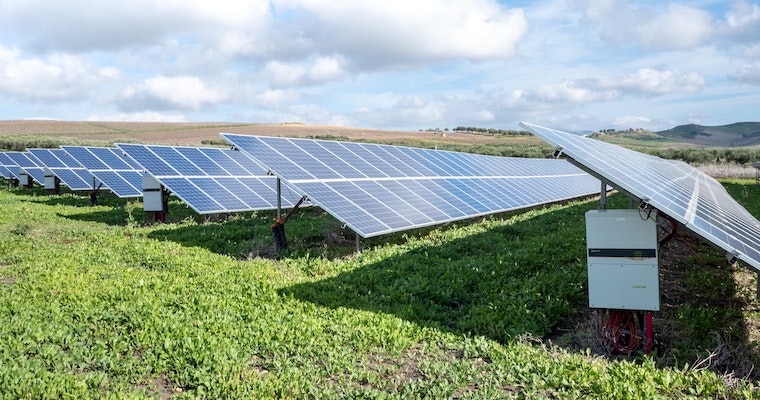Family Businesses: The Greener, the Better?

Climate change has made preserving the environment a critical issue for citizens, governments, and corporations. This is especially true at family businesses, where the family’s desire to perpetuate its legacy encourages them to make sure that both the company and the planet are in good shape for their children.
This strong focus on both business and the environment encourages green innovations – developing environmentally friendly products, processes, services, or methods that significantly reduce environmental harm. For instance, Merck, one of the oldest family-owned firms from the pharmaceutical sector based in Germany, has been so focused on sustainability that it has developed solvents with raw materials that regrow quickly and filtration units that consume less plastic. Such practices can create or improve a firm’s competitive advantage. But ultimately, are they profitable for family firms?
This question can be challenging to answer. On the one hand, family firms have access to both internal and external stakeholders – such as board members, extended family and dedicated personnel – who can help them craft a strategy and make sound decisions about choosing and implementing green options. On the other hand, nepotism, family conflict and resource misallocation can jeopardize the financial success of green initiatives, and family members may disagree on whether those factors are really affecting profits based on their own involvement. To find out more, we looked at how the proportion of family members and the number of generations involved in the top management team (TMT) impacts the conversion of green innovation into profits.
Our Survey
To conduct our analysis, we looked at 191 private family firms from Belgium, where more than 65% of private companies are family business. Investigating environmental issues in Belgium was appropriate, since Belgian companies’ green innovation input indicators are very close to the average of the European Union. Moreover, Belgium has shown increasing interest in developing sustainable business practices.
Our study focused on family firms that had at least 20 employees, because micro and small companies usually operate without a real TMT. On average, our surveyed companies had 63 full-time employees and nine managers involved in the TMT. Using a questionnaire survey, we measured green innovation adoption by asking the chief executive officer of each company to agree or disagree on a scale ranging from one to five. Four different statements gauged how likely they were to engage in green innovation initiatives. These statements were related to “the quantity of inputs the company used in the supply chain to minimize its environmental impact,” “the propensity of the firm to adopt cleaner technology,” “the involvement of the company in reusing or recycling inputs, materials and wastes,” and “the inclination of the firm to substitute toxic materials with eco-friendly ones.” In the questionnaires, we also asked the respondent to provide information about their TMT: the ratio of family members to non-family members and how many generations were involved. In addition, we used data from the Bel-First database of Bureau Van Dijk, which collects and structures accounting information of Belgian family firms, to gauge return on assets and other performance metrics.
Our key findings showed that green innovation adoption did lead to better financial performance at private family firms. This is likely because family owners, whose wealth is closely tied to company success, closely monitor the green initiatives and can deploy their own workforce and their outside networks to maximize the financial benefits from them.
But we also saw that a higher proportion of family members in the TMT hampered the ability of private family firms to convert their green innovation efforts into performance gains. On the other hand, having multiple generations in the TMT helps families reap those gains. Put differently, younger generations on the TMT can help older generations understand how green initiatives can consolidate the firm’s competitive advantage, but too much family participation in the TMT cuts off valuable perspectives from nonfamily members on how to support effective green innovation.
Takeaways
While green innovation sounds appealing, it does not always lead to positive returns for every family business. Here’s what our research told us about how to get the most from it:
- Use resources carefully and strategically. Green innovation costs money and demands time and attention, and family firms must therefore be highly focused on ensuring effective resource allocation. Set up monitoring systems to help you use resources wisely, and limit perks for family members.
- Leverage the family's extended social capital. Family firms are notable for building long-lasting relationships with stakeholders who can share key information and expertise about developing green products, due to their experiences outside the firm’s core domain or their role as consumers. To take advantage of such knowledge, family firms must encourage a collaborative culture. Share knowledge with trusted stakeholders outside of the family, ask for their advice, and value their perspectives when you make important decisions about green innovation.
- Foster diversity in the TMT. Our study indicates that family firms with a smaller proportion of family managers but more generations involved in the top management team draw the best returns from green innovation. Family business should therefore look at their TMT and encourage more generations and nonfamily managers to participate. The firm will benefit from the diversity of knowledge, experience and expertise among family members from different generations and from nonfamily managers. Diversity also helps minimize other problems, including nepotistic appointments of incompetent family managers and/or intrafamily conflict resulting from exaggerated family involvement.
Explore the Research
Going greener, performing better? The case of private family firms, International Business and Finance, December 2022.

Associate Professor / Warocque School of Business and Economics / University of Mons
View Profile

Professor / Financial Economics I / University of the Basque Country (UPV/EHU)
View Profile






